Rolls-Royce Motor Cars PressClub · Article.
ROLLS-ROYCE REFLECTS ON ITS PINNACLE PRODUCT TO MARK 118TH ANNIVERSARY
Wed May 04 09:59:00 CEST 2022 Press Release
Rolls-Royce Motor Cars marks the 118th anniversary of the first meeting between its founders, Henry Royce and The Hon. Charles Stewart Rolls at the Midland Hotel, Manchester, England in 1904. As part of its annual reflections on its origins and unique heritage, Rolls-Royce looks back through Phantom’s lineage, exploring how its namesakes evolved over the years to remain consistently at the apex of the Rolls-Royce offering.
Press Contact.
Andrew Ball
Rolls-Royce Motor Cars
Tel: +44-1243-384-064
send an e-mail
Author.
Andrew Ball
Rolls-Royce Motor Cars
This article in other PressClubs
- Rolls-Royce Motor Cars celebrates the 118th anniversary of the historic first meeting between Henry Royce and The Hon. Charles Stewart Rolls – which took place on 4 May 1904
- The company they founded together created ‘the best car in the world’, a position still occupied today by the marque’s products
- Phantom, Rolls-Royce’s pinnacle product, has continued to evolve technically, aesthetically and dynamically to maintain its pre-eminence in the Rolls-Royce offering, and in the world of luxury
- The eighth generation of Phantom reflects Royce’s held conviction that “small things make perfection, but perfection is no small thing”.
“As we reflect on Phantom’s remarkable heritage, I am struck
by the unique place it occupies in the hearts and minds of our most
demanding Rolls-Royce clients. Phantom is the beneficiary of the
most ambitious forms of Rolls-Royce Bespoke, transforming into
whatever our clients want it to be. Indeed, Phantom is not only the
‘best car in the world’, but the best car for them in their world.”
Torsten Müller-Ötvös, Chief Executive Officer, Rolls-Royce
Motor Cars
Rolls-Royce Motor Cars marks the 118th
anniversary of the first meeting between its founders, Henry Royce and
The Hon. Charles Stewart Rolls at the Midland Hotel, Manchester,
England in 1904.
Through the combination of Royce’s engineering genius and Rolls’
talent for promotion, their company soon became recognised as the
maker of ‘the best car in the world’ – a title that Rolls-Royce Motor
Cars proudly retains more than a century later.
Today, the marque’s pinnacle product – Phantom – is the ultimate
expression of Bespoke luxury designed and handmade at the Home of
Rolls-Royce, Goodwood. As part of its annual reflections on its
origins and unique heritage, Rolls-Royce looks back through Phantom’s
lineage, exploring how its namesakes evolved over the years to remain
consistently at the apex of the Rolls-Royce offering.
THE ORIGINS OF EXCELLENCE
In the automotive industry’s earliest days, luxury car makers
produced only the mechanical components (engine, transmission, chassis
and so on) known as a rolling chassis, which underpinned the car. The
bodies were designed and constructed by independent coachbuilders to
the customer’s specification.
For manufacturers, including Rolls-Royce, improvements in design
and engineering were directed almost entirely towards technical
aspects of the car’s performance. These included reliability,
hill-climbing capability, ease of control and a set of ride quality
attributes still known collectively as noise, vibration and harshness (NVH).
From the outset, Phantom earned the title ‘the best car in the
world’ through the superior quality and designs of the rolling chassis
– the finest platform on which coachbuilders could reach the very apex
of their craft.
REDRAWING TECHNICAL BOUNDARIES
The Phantom family was born in 1925 when Rolls-Royce launched
Phantom I. With its massive low-range torque, cutting-edge technology
and ‘Magic Carpet Ride’, the new model immediately established the
fundamental traits that would define the family for the next 100
years. Then, as now, Rolls-Royce declined to rest on its laurels, and
by 1929, its successor was ready for the market.
Phantom II represented another step-change in engineering and
technology. In 1930, the company unveiled the Phantom II Continental,
which gave customers a choice of a more performance-orientated model
for those who preferred to drive themselves. The ‘standard’
longer-wheelbase car was retained for chauffeur-driven use. This
practice set the precedent for today’s Phantom and Phantom Extended.
THE NEED FOR SPEED
While the new Continental could attain speeds up to 95mph, it
was still not as fast as some of its rivals. The company decided to
resolve the matter once and for all. In 1934, applying its proven
experience with aero engines, it developed a new 7.3-litre V12 engine,
mounted on a new chassis. The resulting Phantom III, when fitted with
lightweight coachwork, was capable of exceeding 100mph.
In 1939, Rolls-Royce produced an experimental car, nicknamed
‘The Scalded Cat’. In later years, this car was often loaned to
influential individuals, including HRH Prince Philip, Duke of
Edinburgh. The Duke was so impressed that he persuaded Rolls-Royce to
build him a more formal version; the marque obliged with the first
Phantom IV, delivered in July 1950. The car remains on front-line
(albeit reduced) duty at The Royal Mews, under its pre-delivery
codename, Maharajah. Though originally intended as a one-off, 18
Phantom IV cars were completed: 17 were sumptuously appointed
commissions for other royalty and heads of state; the other, somewhat
bizarrely, was built as a pick-up truck for use by Rolls-Royce as
transport and on-the-road component testing.
A FINAL FLOURISH
In 1959, the marque launched Phantom V, equipped with its most
up-to-date V8 engine. In 1967, the car underwent subtle technical
changes that were deemed, at the very last minute, sufficient to
justify its redesignation as Phantom VI.
By 1968 the only true coachbuilder left in Britain was
Rolls-Royce’s own in-house company, Mulliner Park Ward. These
magnificent cars soldiered on through the mid-1980s, until production
dwindled to a mere two or three cars a year, and finally ceased
altogether in 1992.
BRINGING VISIONS TO LIFE
Every generation up to Phantom VI was essentially a rolling
chassis. The bodies were built to the owner’s individual requirements
by some of the most famous and prestigious names in British and
European coachbuilding.
While this was normal practice in the luxury automotive world,
Phantom stood apart through its ability – thanks to Royce’s
engineering genius and the excellence of the chassis’ components and
construction – to carry coachwork of the very finest quality, weight
and complexity.
At every stage in Phantom’s development, owners exploited its
potential to the full, creating some of the most magnificent,
eye-catching and radical motor cars ever to grace the road. And since
the chassis and body were separate, it was possible for a subsequent
owner to change the car’s appearance to suit their own taste and requirements.
Many Phantoms took on more than one guise over their long, often
globe-trotting lives: in some cases, they were merely repainted; in
others, the whole car was rebuilt from the chassis upwards, taking on
an entirely new form and character. And for all their extraordinary
diversity, every one of the examples shown below is a true Rolls-Royce
in terms of its underlying engineering, materials and construction,
performance, ride quality and comfort – and, above all, in being
exactly as the owner wanted it.
1930 Phantom II (62GY)
This handsome Phantom II was coachbuilt by Hooper of
London with a Dual Cowl Tourer body. At the request of the owner, a
wealthy timber merchant from Texas, 50 additions were specified with
touring intentions. These include a larger fuel tank, louvered bonnet
and radiator two inches taller than standard. The car was originally
purchased for the owner’s honeymoon and went on to tour the Continent
extensively until 1939. The present custodian acquired the car in 1998
and has since won prestigious awards including the Louis Vuitton
Classic Parfums Givenchy Trophy pre-war tourers and Most Sporting
Tourer in the Biarritz Concours.
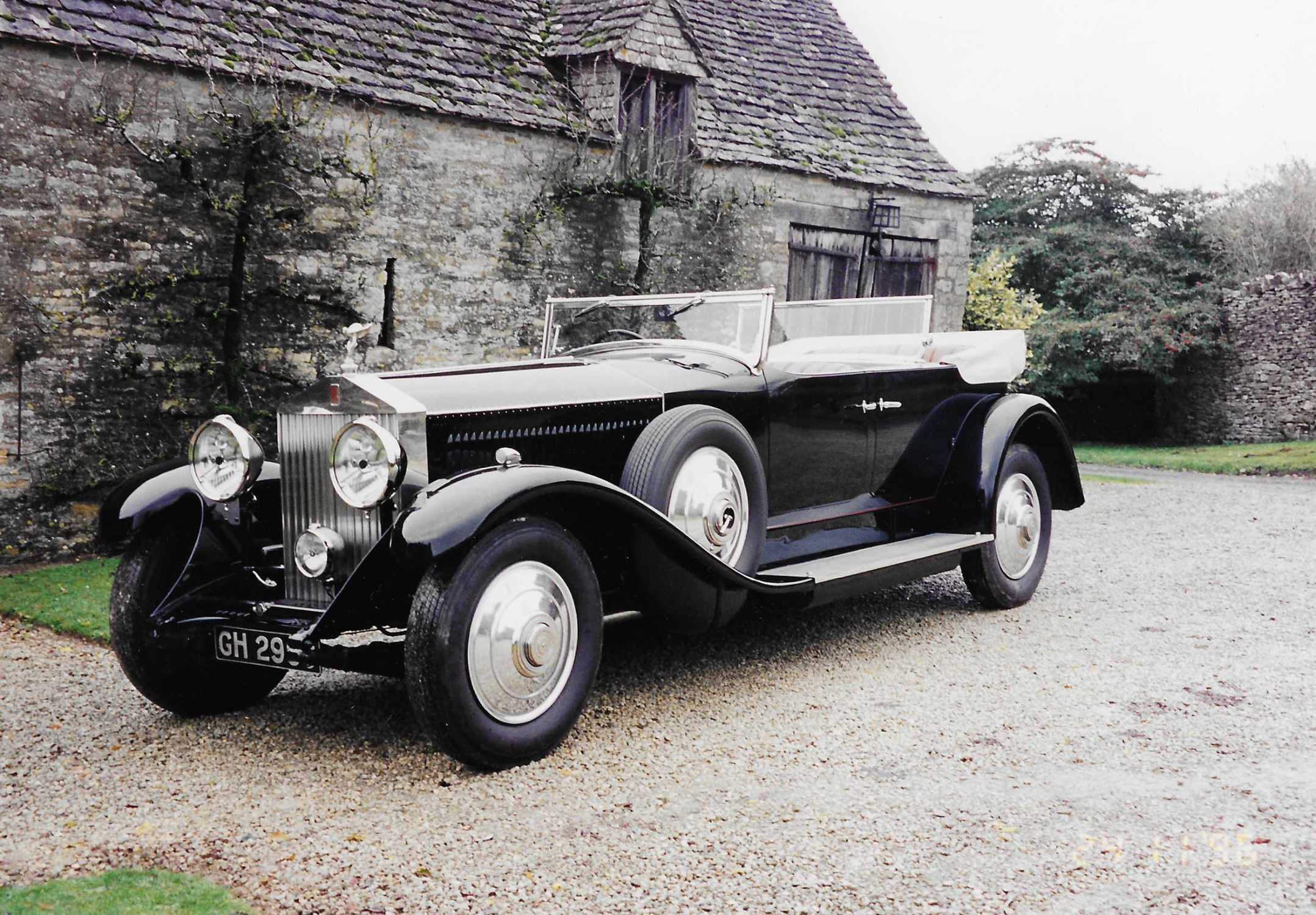
1933 Phantom II Continental (55MW)
This
‘concealed-head boat body’ was a speciality of coachbuilder Park Ward.
Its main feature was the compact folding hood that, when fully
retracted, was entirely concealed under the rear deck, giving the
coachwork its distinctive uninterrupted line. The original upholstery
was textured pigskin.
Source: ‘Park Ward The Innovative Coachbuilder’ by Malcolm Tucker.
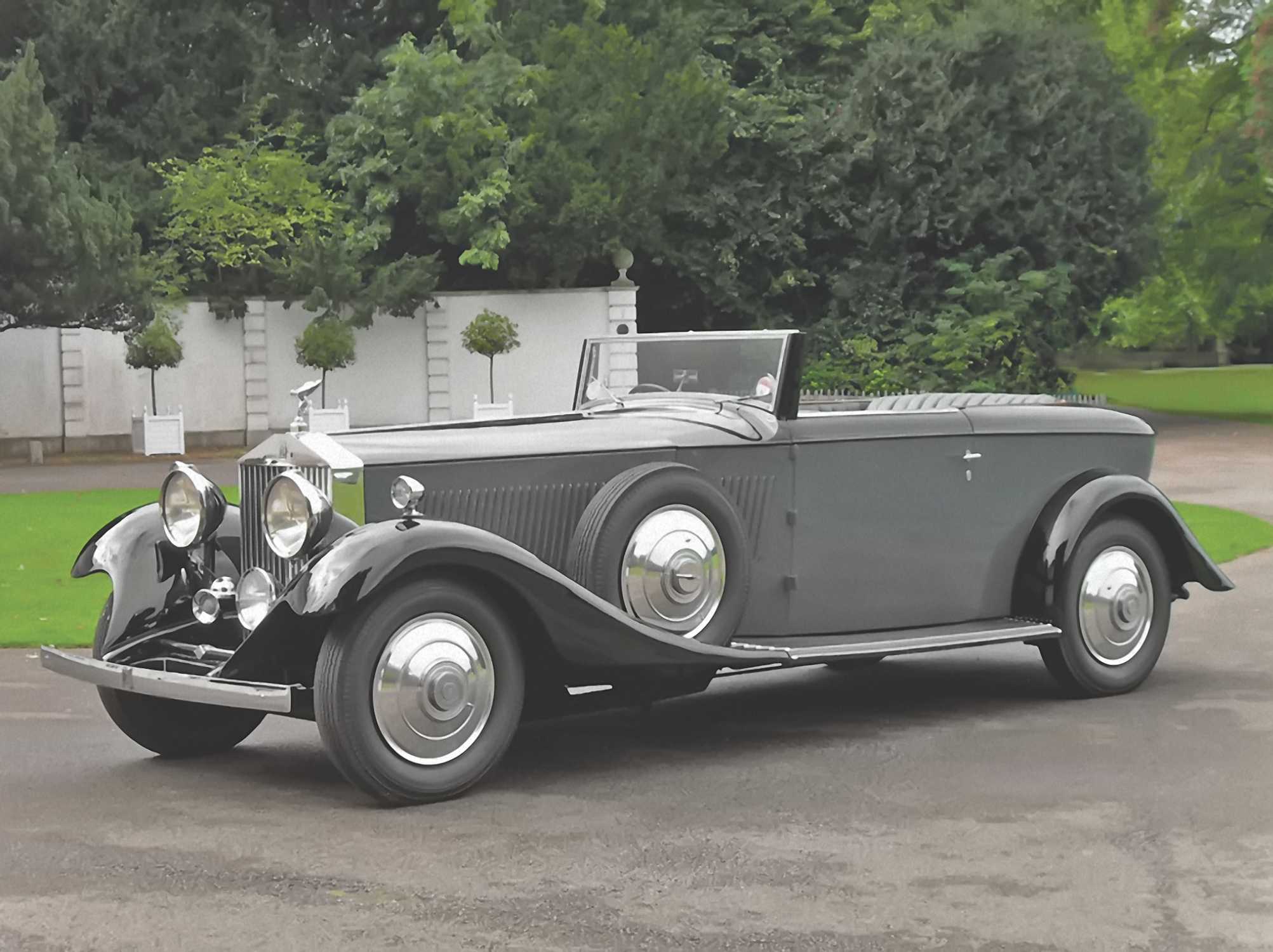
1933 Phantom Ill (3BT103)
This rare two-door sedanca coupé was coachbuilt by HJ
Mulliner for Apsley Cherry-Garrard, one of the surviving members of
Captain Scott's last, fateful expedition to the South Pole in 1912.
The car was originally finished in Primrose Yellow with a dyed Vaulmol
leather interior; in the late 1940s it was repainted in black. The car
was briefly owned by the legendary actor Sir Ralph Richardson; it then
spent time in Wales and the USA before returning to the UK in the late
70s / early 80s. It sat neglected in a barn until 2018 when it was
bought by its present owner, and has now been painstakingly restored
using many authentic components, including original numbered engine parts.
Source: Alpine Eagle Ltd.
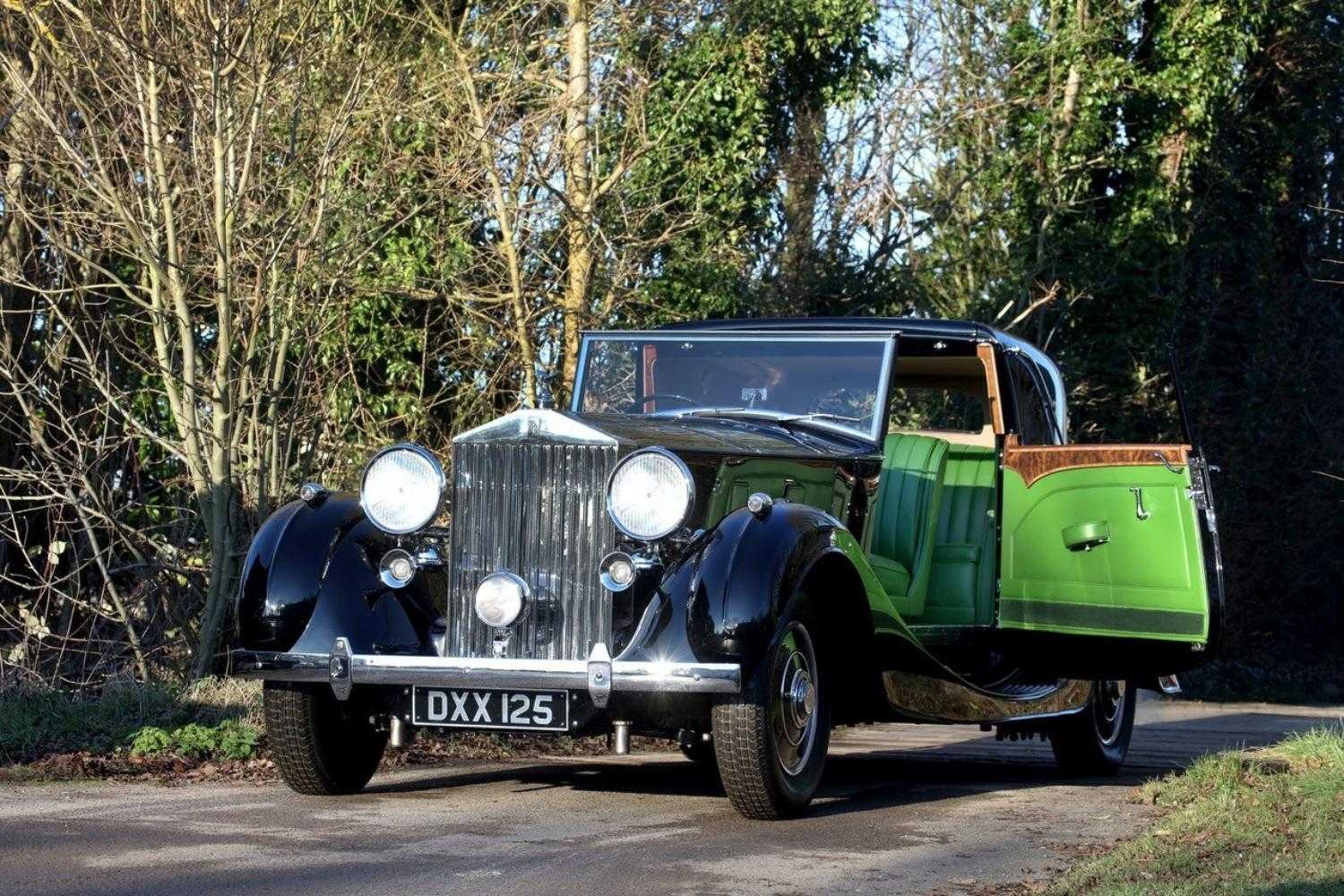
1937 Phantom III (3BT85)
London coachbuilder Hooper & Co built several
bodies in this striking saloon-with-division style, which looks fast
even when standing still thanks to its semi-razor edge styling and
swooping curves. The art-deco chrome-plated flashes to the body and
wings simply enhance the sense of kinetic energy.
Source: ‘The Spectre Arises’ by Steve Stuckey.
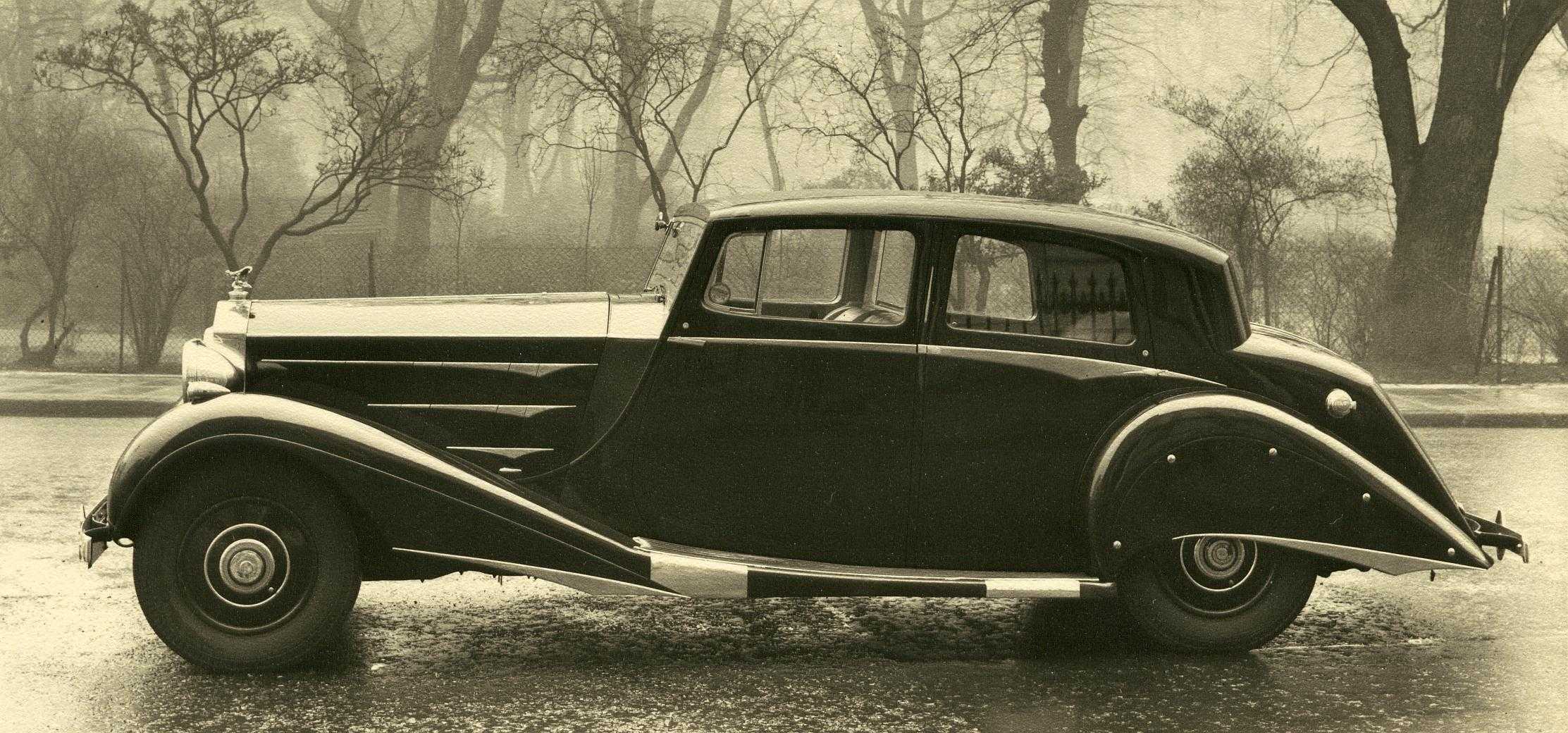
1965 Phantom V (5VD63)
This Phantom was originally owned by Wing Commander
Patrick Barthropp. In 1968, John Lennon purchased the car from
Barthropp coinciding with the launch of The Beatles’ White Album. In
September 1969 he sold the car to Allen Klein, an American businessman.
The car appeared in the Oscar-winning film Georgy Girl (1966),
the classic Let It Be (1970), starring The Beatles, Performance
(1970), featuring Mick Jagger, and then prominently featured in The
Greek Tycoon (1978) starring Anthony Quinn.
In 2016 after extensive restoration, Jody Klein, a longtime
Rolls-Royce Enthusiasts' Club member brought the car to the Concurs
d'Elegance, Lincolnshire, where it was awarded first place for ‘Best
In Class’.
The car currently resides in the United Kingdom.
Source: Photographs courtesy of ABKCO © 2022. All rights reserved.
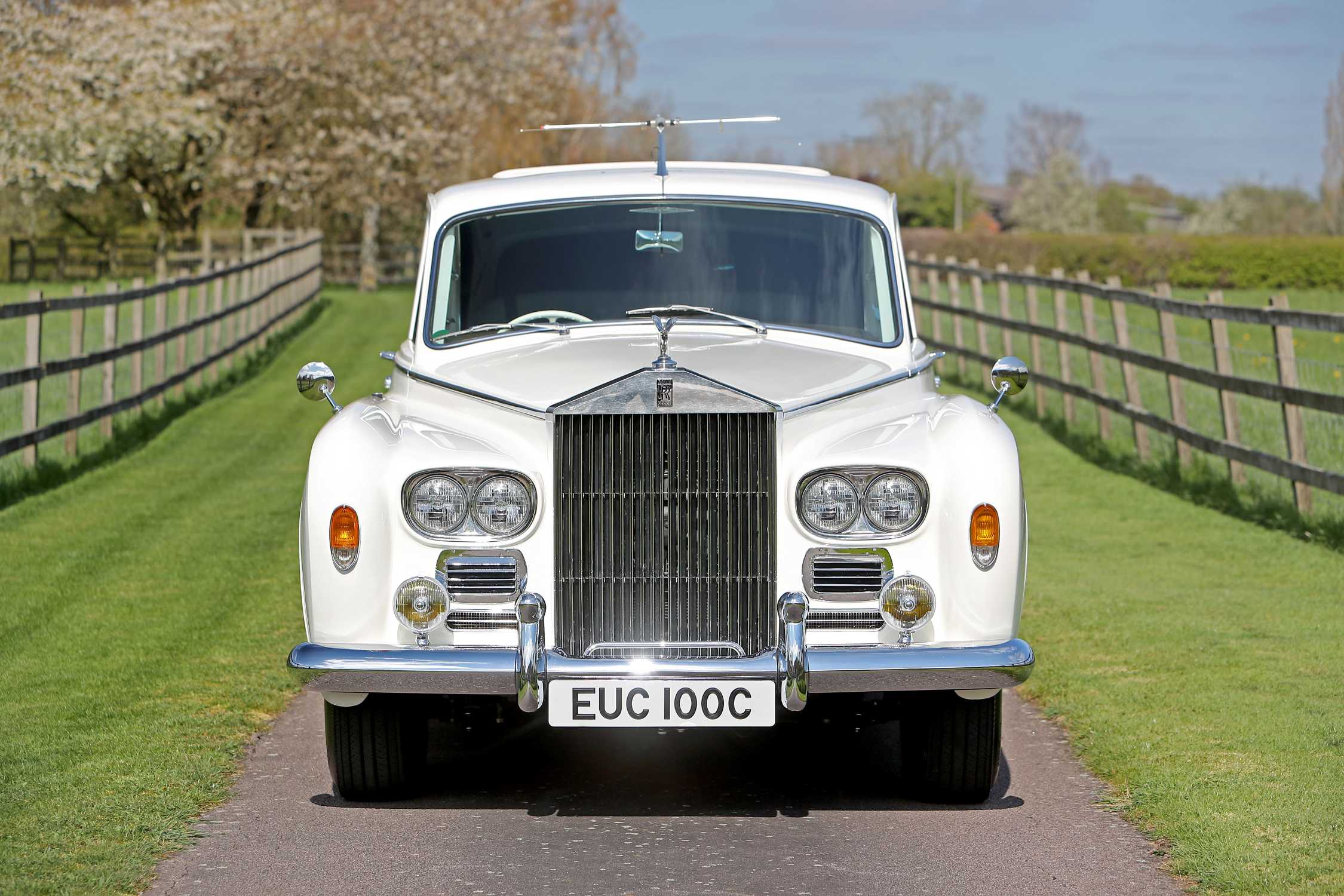
1966 Phantom V (5LVF65)
James Young, established in 1863, is renowned for
creating some of the most elegant coachwork to ever grace a motor car
chassis. Perhaps the pinnacle of their achievements was realised in
their PV23 design, developed especially for the Rolls-Royce Phantom V
chassis, with 22 such bodies being built.
This model was usually finished in black, but for 5LVF65 the
lighter shade of Ivory further enhances the classic elegance of every
curve and line from the pen of its acclaimed designer, A. F. McNeil.
The interior contains a remarkably spacious rear compartment,
with the finest cabinetry work below the division glass. Champagne
cloth to the rear compartment is chosen for greater comfort than the
similarly coloured and more resilient leather that the chauffeur would enjoy.
Source: P&A Wood.
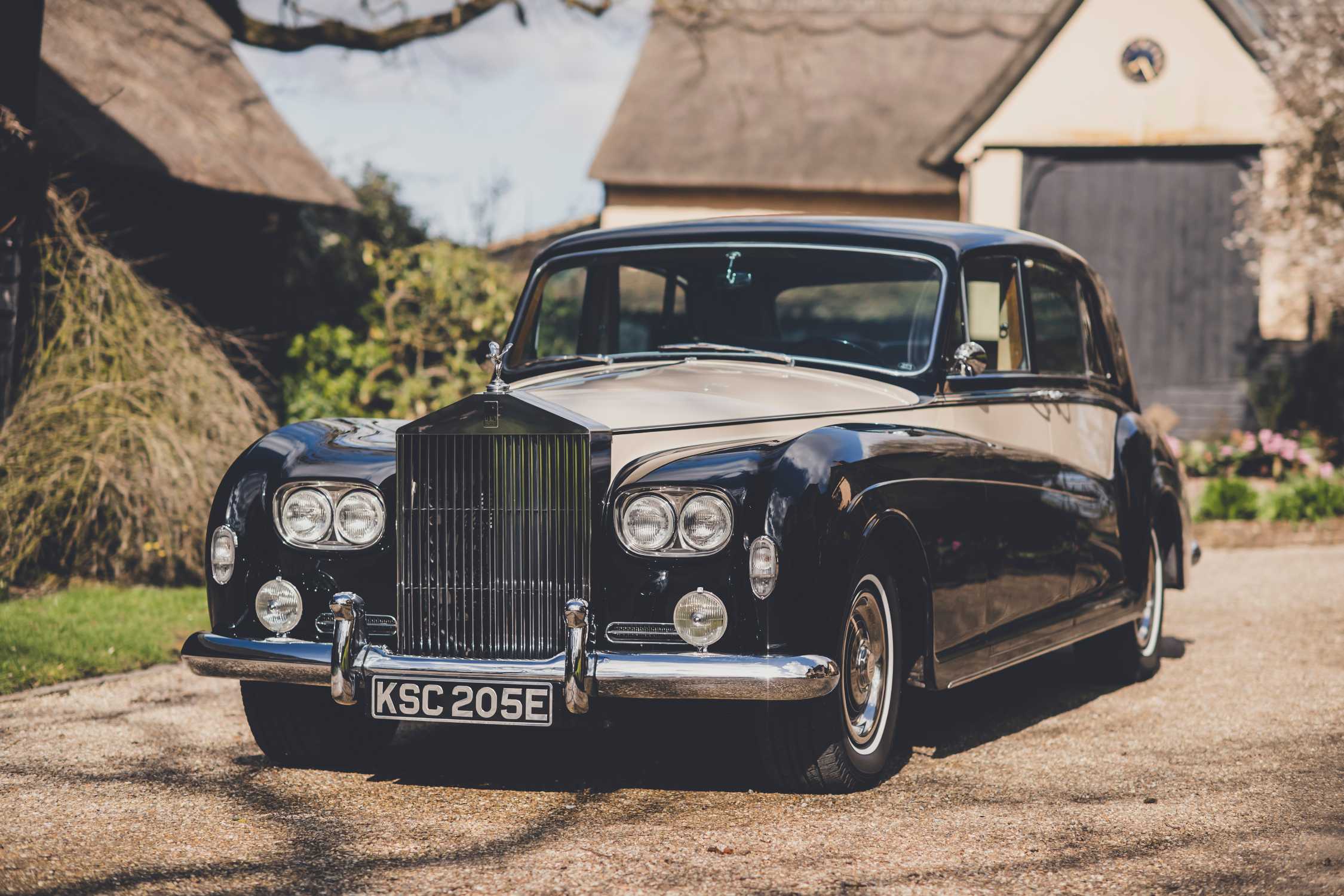
2015 Phantom VII (Serenity Phantom)
Rolls-Royce created this magnificent Bespoke Phantom
VII Extended for its display at the 2015 Geneva Motor Show. Inspired
by opulent motor cars made for international royalty in the early
1900s, the rear passenger cabin is finished in a unique Smoke Green
raw silk, specially handwoven and decorated with hand-embroidered and
hand-painted Chinoiserie blossom motifs that took up to 600 hours to
complete. The design also appears in the fascia and marquetry inlays
in the rear doors; smoked cherrywood and bamboo elements, and details
echoing the raked gravel in Japanese gardens complete the interior’s
calm, natural ambiance. At the time, the Mother of Pearl exterior
paint finish was the most complex – and expensive – the marque had
ever produced.
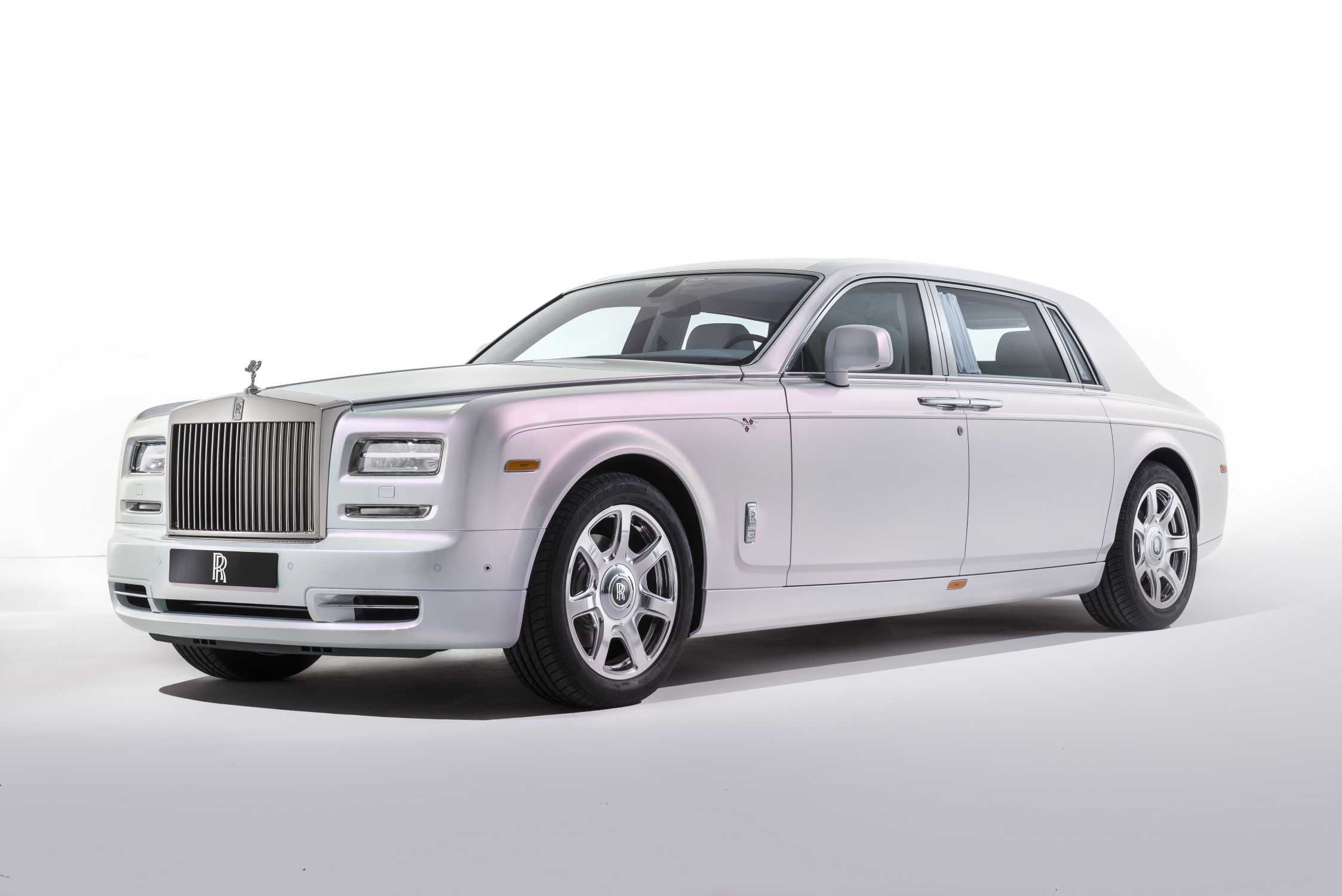
2021 Phantom VIII (Phantom Oribe)
A unique collaboration saw the House of Rolls-Royce
and the House of Hermès co-create a Bespoke Phantom for Japanese
entrepreneur Yusaku Maezawa. Named Phantom Oribe, the motor car
features a Bespoke two-tone exterior finish, inspired by the client’s
world-class collection of ancient Japanese ceramics, Oribe ware. In an
unusual move, the Rolls-Royce paint was made available for use on the
client’s private jet that the Phantom is paired with.
The interior is finished predominantly in Hermès Enea Green
leather. The Gallery features an artwork based on a design by the
celebrated French artist and illustrator Pierre Péron (1905–1988), who
created many of Hermès’ iconic scarves.
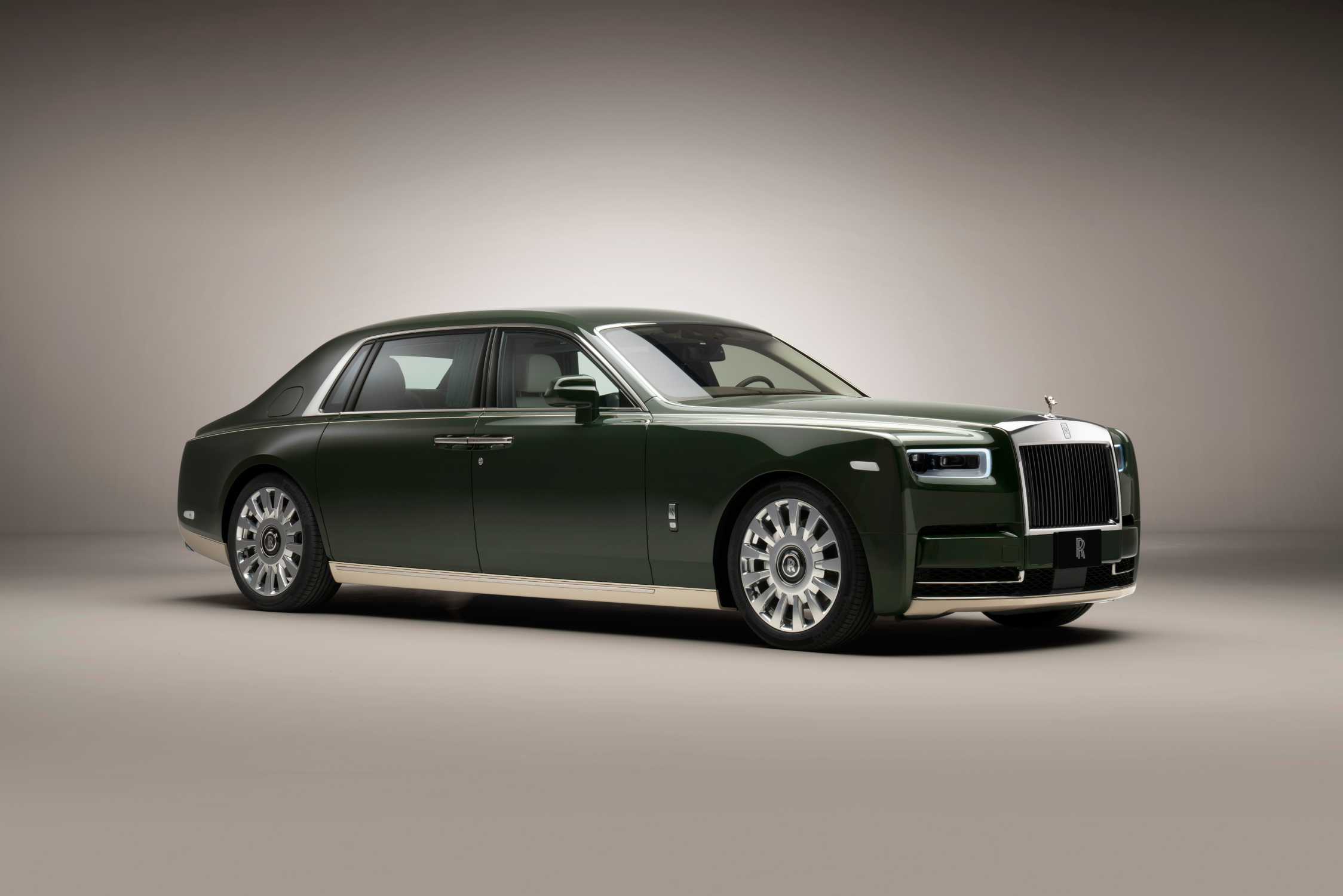
AN ICON REBORN
At one minute past midnight, on 1 January 2003, the first
Phantom VII was handed over to its new owner – the first motor car to
be produced at the brand-new Home of Rolls-Royce at Goodwood, West
Sussex, England. A thoroughly modern interpretation of the marque’s
signature lines and proportions, as first set down by Sir Henry Royce
himself, it was built entirely in-house by Rolls-Royce, with monocoque
bodywork to a standard design rather than coachbuilt. In one important
sense, however, it retained a link with its heritage, in that every
car was hand-built by a team of skilled craftspeople. Furthermore, the
marque’s Bespoke programme meant Phantom was effectively a canvas upon
which patrons could realise their own visions and desires.
Over its 13-year lifespan, Phantom VII cemented Rolls-Royce as
the world’s pre-eminent superluxury motor manufacturer, and its own
place as the marque’s pinnacle product. But just like their
predecessors, Rolls-Royce’s designers and engineers understood that
perfection is a moving target: that Phantom was never ‘done’.
In 2016, Rolls-Royce presented Phantom VIII. This was the first
Rolls-Royce to be built on the marque’s proprietary Architecture of
Luxury, an all-aluminium spaceframe designed to underpin every future
motor car produced at Goodwood.
Phantom VIII was specifically designed to be the ultimate
platform for Bespoke commissions. This has resulted in some of the
most technically ambitious and challenging projects ever undertaken by
the marque’s designers, engineers and specialist craftspeople. It is
also the only Rolls-Royce model to feature the Gallery – an
uninterrupted swathe of glass that runs the full width of the fascia,
behind which the client can display a commissioned work of art or design.
CO2 EMISSIONS & CONSUMPTION.
- Phantom: NEDCcorr (combined) CO2 emission: 329-328 g/km; Fuel consumption: 19.5-19.6 mpg / 14.5-14.4 l/100km. WLTP (combined) CO2 emission: 356-341 g/km; Fuel consumption: 18.0-18.8 mpg / 15.7-15.0 l/100km.
- Phantom Extended: NEDCcorr (combined) CO2 emission: 330-328 g/km; Fuel consumption: 19.5 mpg / 14.5 l/100km. WLTP (combined) CO2 emission: 361-344 g/km; Fuel consumption: 17.8-18.6 mpg / 15.9-15.2 l/100km.
